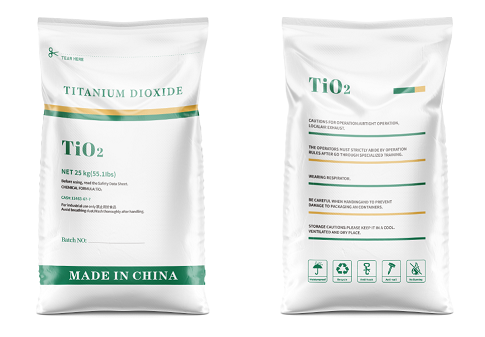Titanium dioxide enterprises have recently implemented their fourth round of price adjustments within the year in response to cost pressure and manufacturers’ temporary reduction in production. This move is expected to boost market confidence.
On July 26, CNNC Titanium Dioxide and Jinpu Titanium announced price increases for titanium dioxide. China Nuclear Titanium Dioxide raised the sales price for domestic customers by RMB 700/ton and the sales price for international customers by USD 100/ton. Jinpu Titanium increased the sales price of its rutile titanium dioxide by 600 yuan/ton and by 100 dollars/ton for various international customers. Additionally, the sales price of anatase titanium dioxide was raised by 1,000 yuan/ton and by 150 dollars/ton for various international customers.
Longbai Group also announced on July 25 that starting from July 25, 2023, the sales price of sulfuric acid titanium dioxide would be increased by RMB 600-800/ton for various domestic customers and USD 100/ton for international customers based on the original price.
Industry insiders have revealed that the main reason for these price increases is the rise in costs. The price of titanium concentrate has increased in the past month, leading to a downward transmission of market price increase sentiment. Additionally, the overall decline in output from mainstream manufacturers has resulted in tight supply. Furthermore, the low price of titanium dioxide has prompted many downstream customers to stock up and place orders with the mindset of “buying the bottom,” providing further support for the price increase by mainstream enterprises during the off-season.
The recovery of the economy has contributed to an improvement in downstream demand for titanium dioxide. In 2022, the titanium dioxide industry experienced a decline in prosperity due to supply and demand imbalance, high costs, and weak demand, with the average market price hovering near the cost line. However, in 2023, the overall economic environment is expected to improve, and the real estate policy will have a positive impact. Downstream demand is anticipated to bottom out and gradually recover.
Recent government policies have focused on tapping into potential consumer demand in the real estate market, which will significantly stimulate the growth of demand for coatings and become a crucial driving force for the release of titanium dioxide market demand. As coating consumption demand continues to recover in China’s real estate market, it is expected that the titanium dioxide industry will accelerate its recovery in the second half of 2023, driven by positive factors such as increased demand in the downstream market.
Analyst Sun Wenjing from Zhuo Chuang Information stated, “Based on expectations in the main downstream real estate sector, it is anticipated that there will be favorable policies for real estate in the second half of the year, making it potentially better than the first half.” This outlook is influenced by the expected decline in new real estate construction and the limited long-term incremental scale of the real estate industry. Additionally, considering the seasonal demand patterns for titanium dioxide, the overall price is expected to remain low in the second half of the year.
Looking ahead, the demand for titanium dioxide products is expected to continue growing due to its many application scenarios, the development of the global economy, and the improvement of living standards, particularly in developing countries experiencing industrialization and urbanization.
The global demand for coatings and paints is on the rise, further fueled by the significant inventory and renovation demand in the domestic real estate industry. This has become an additional driving force for the growth of the titanium dioxide market.
According to the China Coating Industry Association, it is estimated that by 2025, China’s coating production will reach 30 million tons, with a compound growth rate of 4.96% from 2021 to 2025.
Post time: Aug-15-2023


